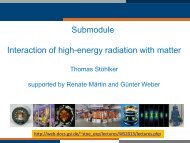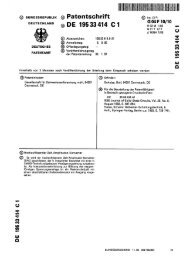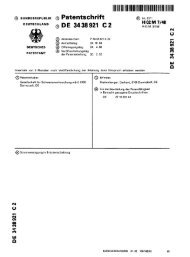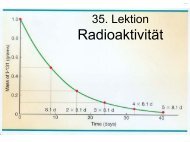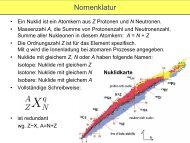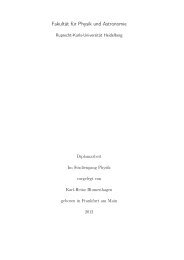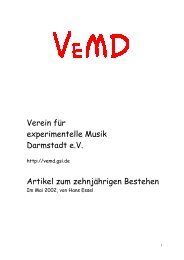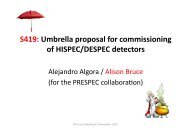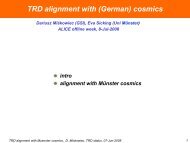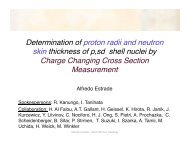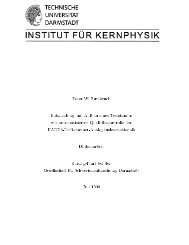doctoral thesis
doctoral thesis
doctoral thesis
You also want an ePaper? Increase the reach of your titles
YUMPU automatically turns print PDFs into web optimized ePapers that Google loves.
36 CHAPTER 2. DETECTOR PHYSICS OF RPCS<br />
Average Number of Clusters/mm<br />
16<br />
14<br />
12<br />
10<br />
8<br />
6<br />
4<br />
2<br />
0<br />
10 -1<br />
i-C 4 H 10 100<br />
C 2 F 4 H 2 /i-C 4 H 10 /SF 6 85/5/10<br />
C 2 F 4 H 2 /i-C 4 H 10 /SF 6 96.7/3./0.3<br />
CH 4 100<br />
1 10 10 2<br />
γ-1<br />
Figure 2.2: The average number of ionizing collisions (clusters) per mm (n = 1/λ) as<br />
a function of γ − 1 for different gases as predicted by HEED [25]. T = 296.15 K and<br />
p = 1013 mbar. The solid lines are measurements taken from [75].<br />
2.1.2 Maximum Detection Efficiency<br />
Since the distance between the ionizing collisions is exponentially distributed, the<br />
number of clusters on a distance g follows a Poisson distribution with an average of<br />
n = g/λ. The probability to have n clusters is given by<br />
P (n) = 1<br />
n!<br />
<br />
g<br />
n g<br />
−<br />
e λ . (2.5)<br />
λ<br />
The average number of clusters is very different for different gas mixtures. In Table<br />
2.1 we list values of n = g/λ for g = 1 mm for a few common gases.<br />
We assume that all primary clusters in the gas gap are detected, which can only<br />
theoretically be achieved by either an infinite gas gain or a threshold of zero applied to<br />
the signals. With Eq. 2.5 we calculate the maximum detection efficiency ɛmax to be<br />
ɛmax = 1 − e −n , (2.6)



